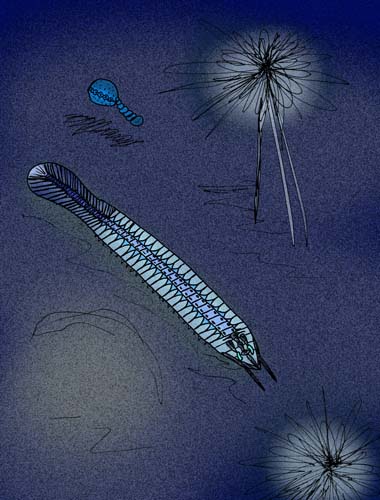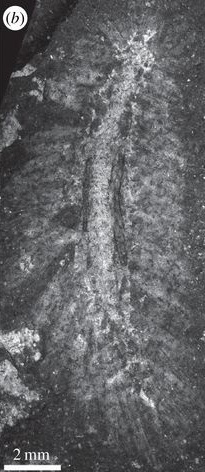|
Buen Formation
The Buen Formation is a Formation (geology), geologic formation and Lagerstätte in Peary Land, North Greenland. The shale preserves fossils dating back to the Early Cambrian Period (geology), period (Atdabanian in the local timescale, about 520 to 513 Ma).Buen Formation at Fossilworks.org Description The oldest Cambrian series of the area was deposited in the Franklinian Basin and is poorly exposed in fragmentary, heavily metamorphosed outcrops in Peary Land. It was emplaced during the Ellesmerian Orogeny, Ellesmerian orogeny.Geyer & Peel, 2011, p.466Higgins et al., 2000, p.141Paleogeography [...More Info...] [...Related Items...] OR: [Wikipedia] [Google] [Baidu] |
Formation (stratigraphy)
A geological formation, or simply formation, is a body of rock having a consistent set of physical characteristics (lithology) that distinguishes it from adjacent bodies of rock, and which occupies a particular position in the layers of rock exposed in a geographical region (the stratigraphic column). It is the fundamental unit of lithostratigraphy, the study of strata or rock layers. A formation must be large enough that it can be mapped at the surface or traced in the subsurface. Formations are otherwise not defined by the thickness (geology), thickness of their rock strata, which can vary widely. They are usually, but not universally, tabular in form. They may consist of a single lithology (rock type), or of alternating beds of two or more lithologies, or even a heterogeneous mixture of lithologies, so long as this distinguishes them from adjacent bodies of rock. The concept of a geologic formation goes back to the beginnings of modern scientific geology. The term was used by ... [...More Info...] [...Related Items...] OR: [Wikipedia] [Google] [Baidu] |
Fossilworks
Fossilworks was a portal which provides query, download, and analysis tools to facilitate access to the Paleobiology Database, a large relational database assembled by hundreds of paleontologists from around the world. History Fossilworks was created in 1998 by John Alroy and housed at Macquarie University Macquarie University ( ) is a Public university, public research university in Sydney, New South Wales, Australia. Founded in 1964 by the New South Wales Government, it was the third university to be established in the Sydney metropolitan area. .... It included many analysis and data visualization tools formerly included in the Paleobiology Database.{{cite web, title=Frequently asked questions, url=http://www.fossilworks.org/cgi-bin/bridge.pl?page=FAQ, publisher=Fossilworks, access-date=17 December 2021, archive-date=18 May 2022, archive-url=https://web.archive.org/web/20220518205516/http://www.fossilworks.org/cgi-bin/bridge.pl?page=FAQ, url-status=dead Fossilworks was sh ... [...More Info...] [...Related Items...] OR: [Wikipedia] [Google] [Baidu] |
Kerygmachela
''Kerygmachela kierkegaardi'' is a Kerygmachelidae, kerygmachelid Lobopodia#Gilled lobopodians, gilled lobopodian from the Cambrian Stage 3 aged Sirius Passet Lagerstätte in northern Greenland. Its anatomy strongly suggests that it, along with its relative ''Pambdelurion whittingtoni'', was a close relative of radiodont (''Anomalocaris'' and relatives) and euarthropods. The Generic name (biology), generic name "''Kerygmachela''" derives from the Greek language, Greek words ''Kerygma'' (proclamation) and ''Chela'' (claw), in reference to the flamboyant frontal appendages. The Specific name (zoology), specific name, "''kierkegaardi''" honors Denmark, Danish philosopher Søren Kierkegaard. Morphology The head of ''Kerygmachela'' possesses a pair of well-developed frontal appendages which correspond to those of other Dinocaridida, dinocaridids and Lobopodia#Siberion and similar taxa, siberiid lobopodians. Each of them terminates in a series of long spines. A pair of sessile, sli ... [...More Info...] [...Related Items...] OR: [Wikipedia] [Google] [Baidu] |
Aaveqaspis Inesoni
''Aaveqaspis'' is a genus of small (about long) marine arthropods of unclear affiliation, that lived during the early Cambrian period. Fossil remains of ''Aaveqaspis'' were collected from the Lower Cambrian Sirius Passet fossil-Lagerstätte of North Greenland. ''Aaveqaspis'' looks like a soft eyeless trilobite with a weakly defined axis, a headshield (or cephalon) with stubby genal spines, 5 thorax segments also ending in stubby genal spines, and a tailshield (pygidium) with a pair of massive tusk-like spines, and two smaller spines near the end of the axis. The only species presently known is ''A. inesoni'' (i.e. the genus is monotypic). Etymology The name of the genus is a compound of the Greenlandic word (), reflecting the likeness of the tail spines to the tusks of a walrus, and the Ancient Greek word (; ). The species was named after Jon R. Ineson to honour him for his studies of the Cambrian of North Greenland. Description ''Aaveqaspis inesoni'' is almost flat (do ... [...More Info...] [...Related Items...] OR: [Wikipedia] [Google] [Baidu] |
Buenellus
''Buenellus higginsi'' is an average size (about ) trilobite, which lived during the Lower Cambrian period, in what is now North-West Greenland. It is a prominent member of the Sirius Passet fauna. ''Buenellus higginsi'' is the only known species in the genus ''Buenellus'' (i.e., the genus is monotypic). Etymology The genus name is a contraction of Buen, from the formation in which it was first collected, and ''Olenellus'', a somewhat related trilobite genus. The species specific epithet honors A. Higgins, who discovered the Sirius Passet ' in 1984 during the Geological Survey of Greenland. Description The general outline of the body is rounded n the front third, parallel sided in the middle third, and progressively tapering backwards in the back third, ending at an angle of approximately 45° with the midline. The headshield (or cephalon is approximately × as long as it is wide. The (in this case only slightly) vaulted central axis of the head or glabella tapers gently forw ... [...More Info...] [...Related Items...] OR: [Wikipedia] [Google] [Baidu] |
Buenaspis Drawing
''Buenaspis'' is a genus of small ( long) nektaspid arthropod, that lived during the early Cambrian period.Budd, G.E (1999).A Nectaspid Arthropod from the Early Cambrian Sirius Passet Fauna, with a description of Retrodeformation based on Functional Morphology. ''Palaeontology'', 42(1):99–122 Fossil remains of ''Buenaspis'' were collected from the Lower Cambrian Sirius Passet ''Lagerstätte'' of North Greenland. ''Buenaspis'' looks like a soft eyeless trilobite. It has a headshield (or cephalon) slightly larger than the tailshield (pygidium), and in between them six thoracic body segments (somites). The genus is monotypic, its sole species being ''Buenaspis forteyi''. Etymology The name of the genus is derived from the Buen Formation, the deposit where the species was collected, and the Greek word ''aspis'' (shield). The species was named in honor of Richard Fortey, a famed paleontologist. Description ''Buenaspis forteyi'' is between 1 and 3 cm along the axis, appr ... [...More Info...] [...Related Items...] OR: [Wikipedia] [Google] [Baidu] |
Arthropod
Arthropods ( ) are invertebrates in the phylum Arthropoda. They possess an arthropod exoskeleton, exoskeleton with a cuticle made of chitin, often Mineralization (biology), mineralised with calcium carbonate, a body with differentiated (Metamerism (biology), metameric) Segmentation (biology), segments, and paired jointed appendages. In order to keep growing, they must go through stages of moulting, a process by which they shed their exoskeleton to reveal a new one. They form an extremely diverse group of up to ten million species. Haemolymph is the analogue of blood for most arthropods. An arthropod has an open circulatory system, with a body cavity called a haemocoel through which haemolymph circulates to the interior Organ (anatomy), organs. Like their exteriors, the internal organs of arthropods are generally built of repeated segments. They have ladder-like nervous systems, with paired Anatomical terms of location#Dorsal and ventral, ventral Ventral nerve cord, nerve cord ... [...More Info...] [...Related Items...] OR: [Wikipedia] [Google] [Baidu] |
Phragmochaeta Canicularis
''Phragmochaeta canicularis'' is an extinct animal belonging to the annelids and lived in the Early Cambrian (Atdabanian in the local timescale, about 520 million years ago).''Phragmochaeta canicularis'' at .org Fossils have only been found in the at the |
Annelid
The annelids (), also known as the segmented worms, are animals that comprise the phylum Annelida (; ). The phylum contains over 22,000 extant species, including ragworms, earthworms, and leeches. The species exist in and have adapted to various ecologies – some in marine environments as distinct as tidal zones and hydrothermal vents, others in fresh water, and yet others in moist terrestrial environments. The annelids are bilaterally symmetrical, triploblastic, coelomate, invertebrate organisms. They also have parapodia for locomotion. Most textbooks still use the traditional division into polychaetes (almost all marine), oligochaetes (which include earthworms) and leech-like species. Cladistic research since 1997 has radically changed this scheme, viewing leeches as a sub-group of oligochaetes and oligochaetes as a sub-group of polychaetes. In addition, the Pogonophora, Echiura and Sipuncula, previously regarded as separate phyla, are now regarded as sub-grou ... [...More Info...] [...Related Items...] OR: [Wikipedia] [Google] [Baidu] |
Polkorridoren Group
Polkorridoren (meaning "Polar Corridor" in Danish), formerly known as Nordpassagen, is a mountain pass in Peary Land, Greenland. Administratively, it is part of the Northeast Greenland National Park. In 1953, a geological expedition went through the Polkorridoren pass crossing the Roosevelt Range from south to north. The Polkorridoren Group is a geological formation named after the pass. Geography The pass is located in the central / western sector of the Roosevelt Range, east of Gertrud Rask Land. It runs from north to south between the glacial valley of Sands Fjord to the north and the valley of Frigg Fjord to the south. Helvetia Tinde rises to the west. See also * Nordpasset *Sirius Passet Sirius Passet is a Cambrian Lagerstätte in Peary Land, Greenland. The Sirius Passet Lagerstätte was named after the Slædepatruljen Sirius, Sirius sledge patrol that operates in North Greenland. It comprises six places in Nansen Land, on the eas ... References {{Reflist External ... [...More Info...] [...Related Items...] OR: [Wikipedia] [Google] [Baidu] |





